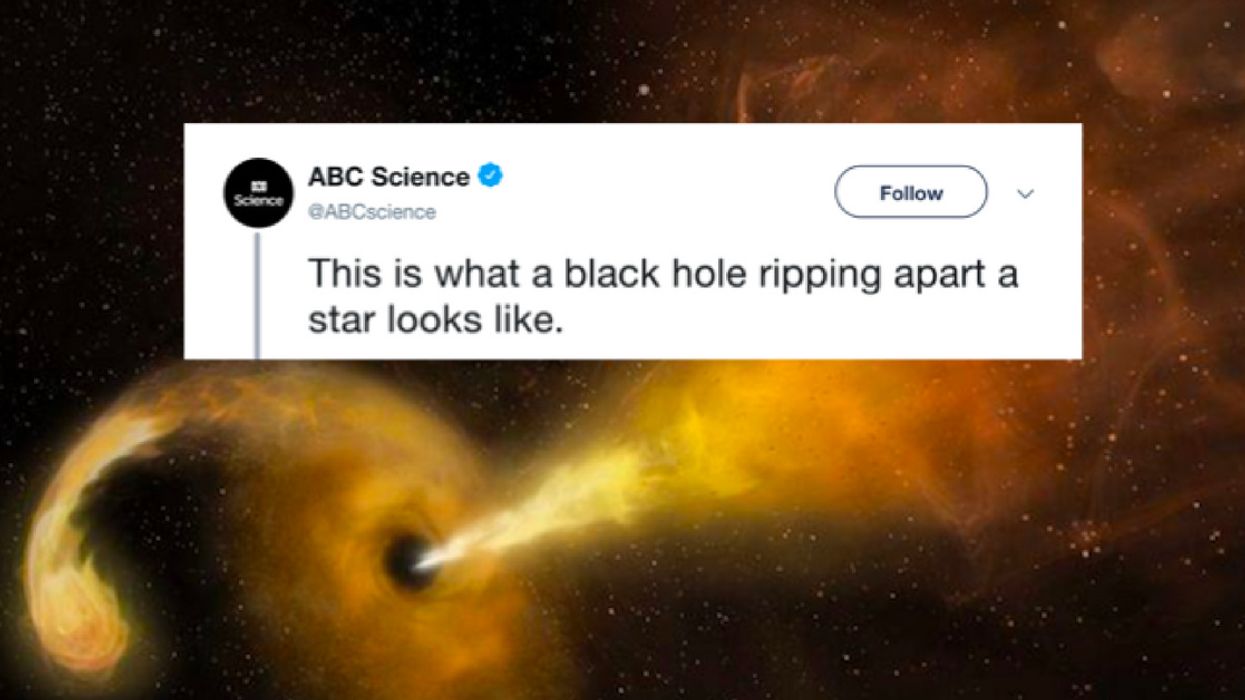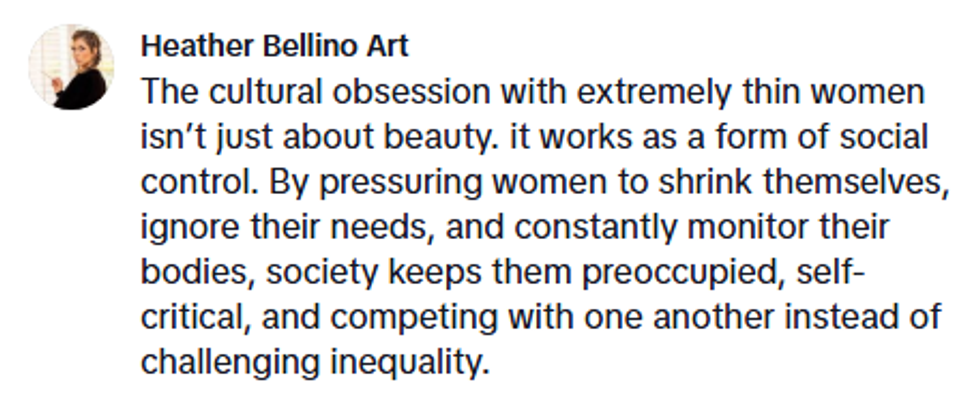For ten years, an international team of scientists observed the black hole devouring a massive star in a distant galaxy and captured images of bursting radio waves.
The result is beyond out of this world.
Stuart Ryder of the Australian Astronomical Observatory co-authored the study and described the astounding imagery in an ABC Science interview.
What we are seeing is the utter and complete destruction of a star, which was anywhere from two to seven times the mass of our Sun.
People were quick to be confused with an alleged artist's rendering for the real thing.
The real image capture is visually less dramatic, but the colors from the flare are striking!
According to Science Mag, the phenomenon is called a Tidal disruption events (TDEs), which are the bright flares emitted as a result of a star being ripped apart by the gravitation force of a black hole. Once a wayward star lands within reach, it elongates and emits a bright flare theoretically within the X-ray, ultraviolet and visible light spectrum.
Black holes exist in most galaxies, including our own, and have a mass that's a million times larger than the sun.
During these Tidal Disruption Events, not all of a star's gases get stripped and fall into the black hole, and any remaining fragments are ejected back into the galaxy at the speed of light.
Ryder said spotting the jet of radio waves was an unprecedented discovery.
It took the best part of a decade before we were able to detect the expansion of this jet using some of the world's best radio telescopes.
Ryder explained that previous supernova events were captured within the infrared and radio spectrums, but not via optical telescopes.
None of our optical telescopes, not even the largest ones on Earth, were able to notice anything unusual in the brightness of the nuclear region in this galaxy.
People always expect to see [these tidal disruption events] in the optical wavelengths, but we've shown that's not necessarily going to be the case.
The appetite is real.
There's beauty within the violent nature of these cosmic events, and it's a reminder that we truly are a speck of dust swirling around in the universe.
H/T - Twitter, ABCscience














 @RichardLaub4/X
@RichardLaub4/X @RonFilipkowski/X
@RonFilipkowski/X
 @fortunate_fiasco/Instagram
@fortunate_fiasco/Instagram @baadbrad/Instagram
@baadbrad/Instagram @starbaksh/Instagram
@starbaksh/Instagram @angelcartel/Instagram
@angelcartel/Instagram @tamoderos/Instagram
@tamoderos/Instagram @rinabekiri/Instagram
@rinabekiri/Instagram @grace.s.hamilton/Instagram
@grace.s.hamilton/Instagram @robbietomkins/Instagram
@robbietomkins/Instagram @mereyahncage/Instagram
@mereyahncage/Instagram @aristochick/Instagram
@aristochick/Instagram @rrmrrmrrmrrmrrm/Instagram
@rrmrrmrrmrrmrrm/Instagram @drewguy88/Instagram
@drewguy88/Instagram @annacollins5172024/Instagram
@annacollins5172024/Instagram @lvndrbeauty/Instagram
@lvndrbeauty/Instagram @dinalohan/Instagram
@dinalohan/Instagram
 @jameelajamil/TikTok
@jameelajamil/TikTok @jameelajamil/TikTok
@jameelajamil/TikTok @jameelajamil/TikTok
@jameelajamil/TikTok @jameelajamil/TikTok
@jameelajamil/TikTok @jameelajamil/TikTok
@jameelajamil/TikTok @jameelajamil/TikTok
@jameelajamil/TikTok @jameelajamil/TikTok
@jameelajamil/TikTok @jameelajamil/TikTok
@jameelajamil/TikTok @jameelajamil/TikTok
@jameelajamil/TikTok @jameelajamil/TikTok
@jameelajamil/TikTok